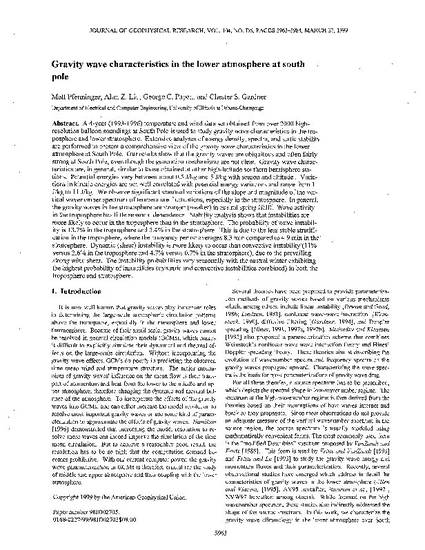
A 4-year (1993-1996) temperature and wind data set obtained from over 2000 high-resolution balloon soundings at South Pole is used to study gravity wave characteristics in the atmosphere and lower stratosphere. Extensive analyses of energy density, spectra, and static stability are performed to present a comprehensive view of the gravity waves are ubiquitous and often fairly strong at the South Pole, even though the generation mechanisms are not clear. Gravity wave characteristics are, in general, similar to those obtained at other high-latitude southern hemisphere stations. Potential energies vary between about 0.5 J/kg and 5 J/kg with season and altitude. Variations in kinetic energies are not well correlated with potential energy variations and range from 1 J/kg to 11 J/kg. We observe significant seasonal variations of the slope and magnitude of the vertical wavenumber spectrum of temperature fluctuations, especially in the stratosphere. In general, the gravity waves in the stratosphere are stronger (weaker) in austral spring (fall). Stability analysis shows that instabilities are more likely to occur in the troposphere than in the stratosphere. The probability of wave instability is 13.7% in the troposphere and 5.4 % in the stratosphere. This is due to the less stratification of the troposphere, where the buoyancy period averages 8.3 min compared to 4.9 min in the stratosphere. Dynamic (shear) instability is more likely to occur than convective instability (11% versus 2.6% in the troposphere and 4.7% versus 0.7% in the stratosphere), due to the prevailing strong wind shear. The instability probabilities vary seasonally with the austral winter exhibiting the probability of instabilities (dynamic and convective instabilities combined) in both the troposphere and stratosphere.
Available at: http://works.bepress.com/alanliu/55/
